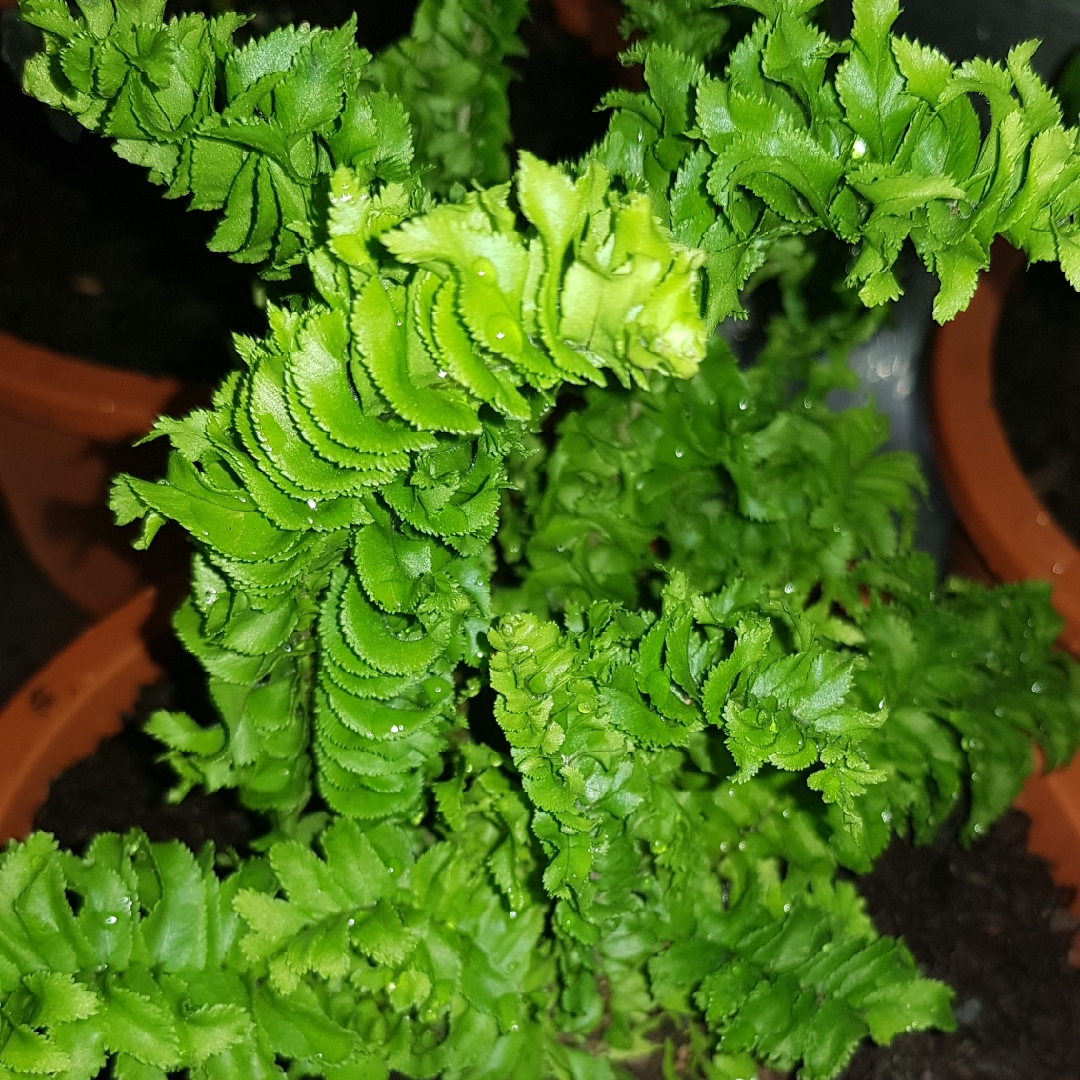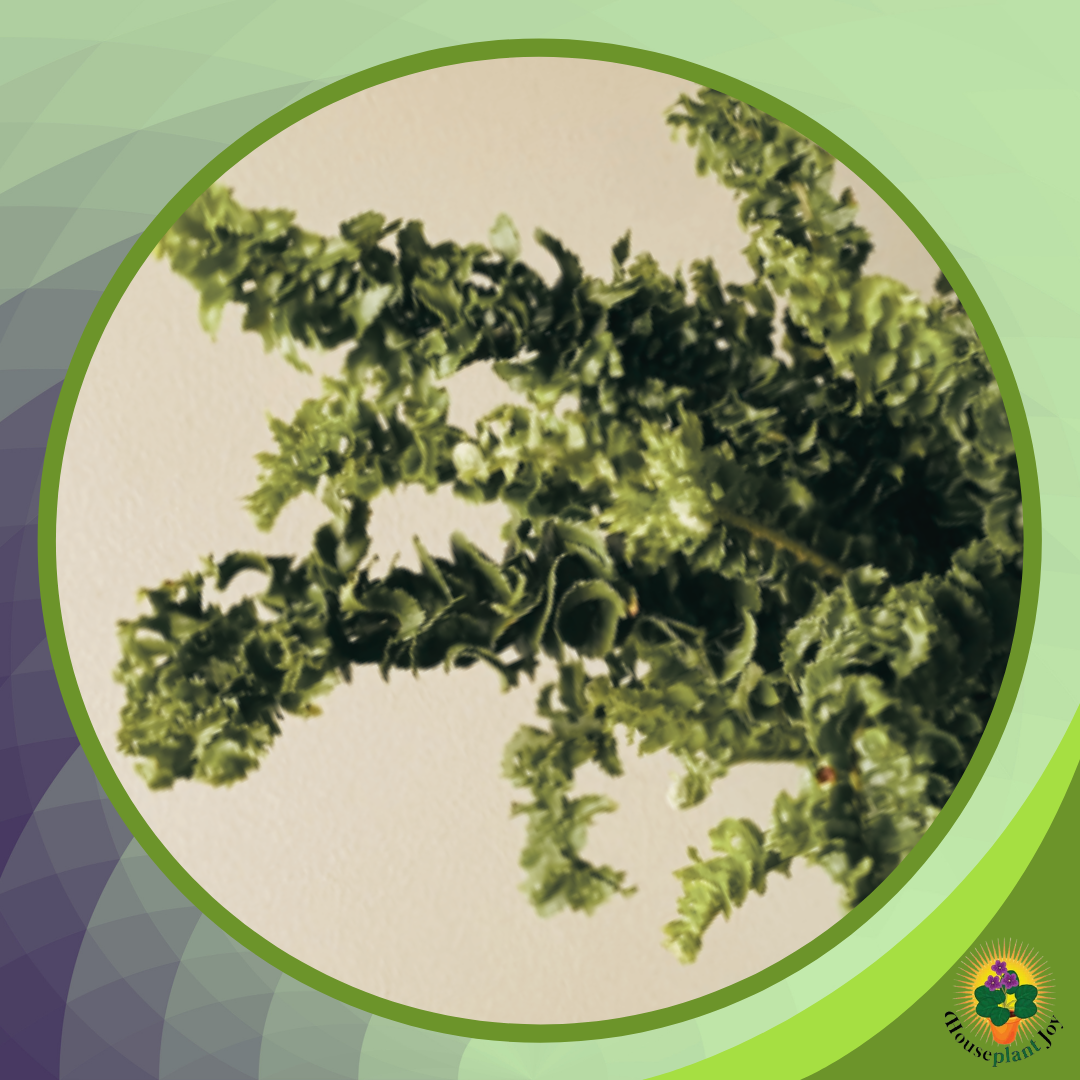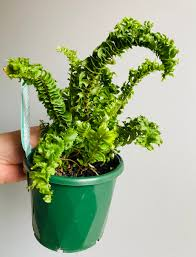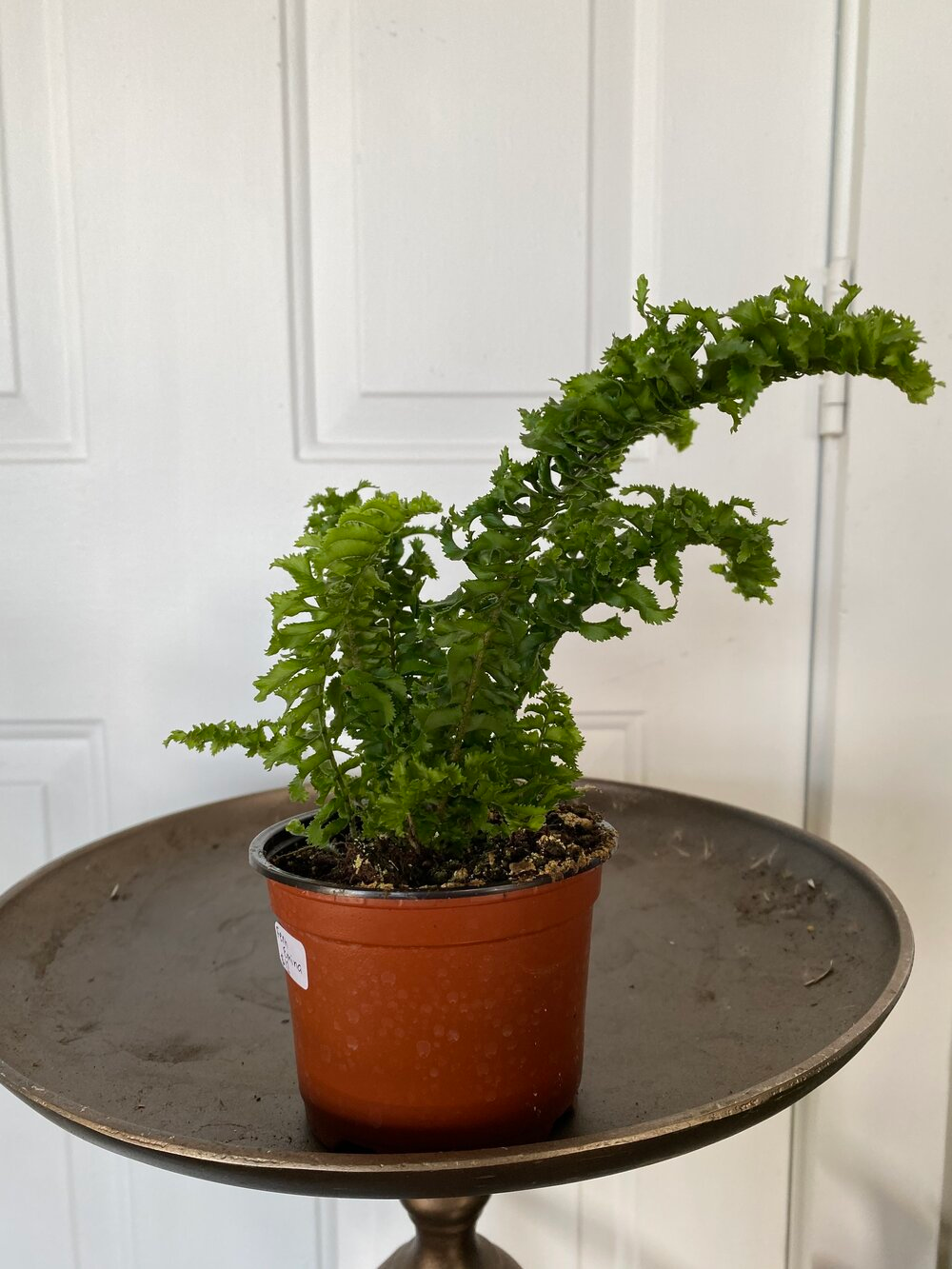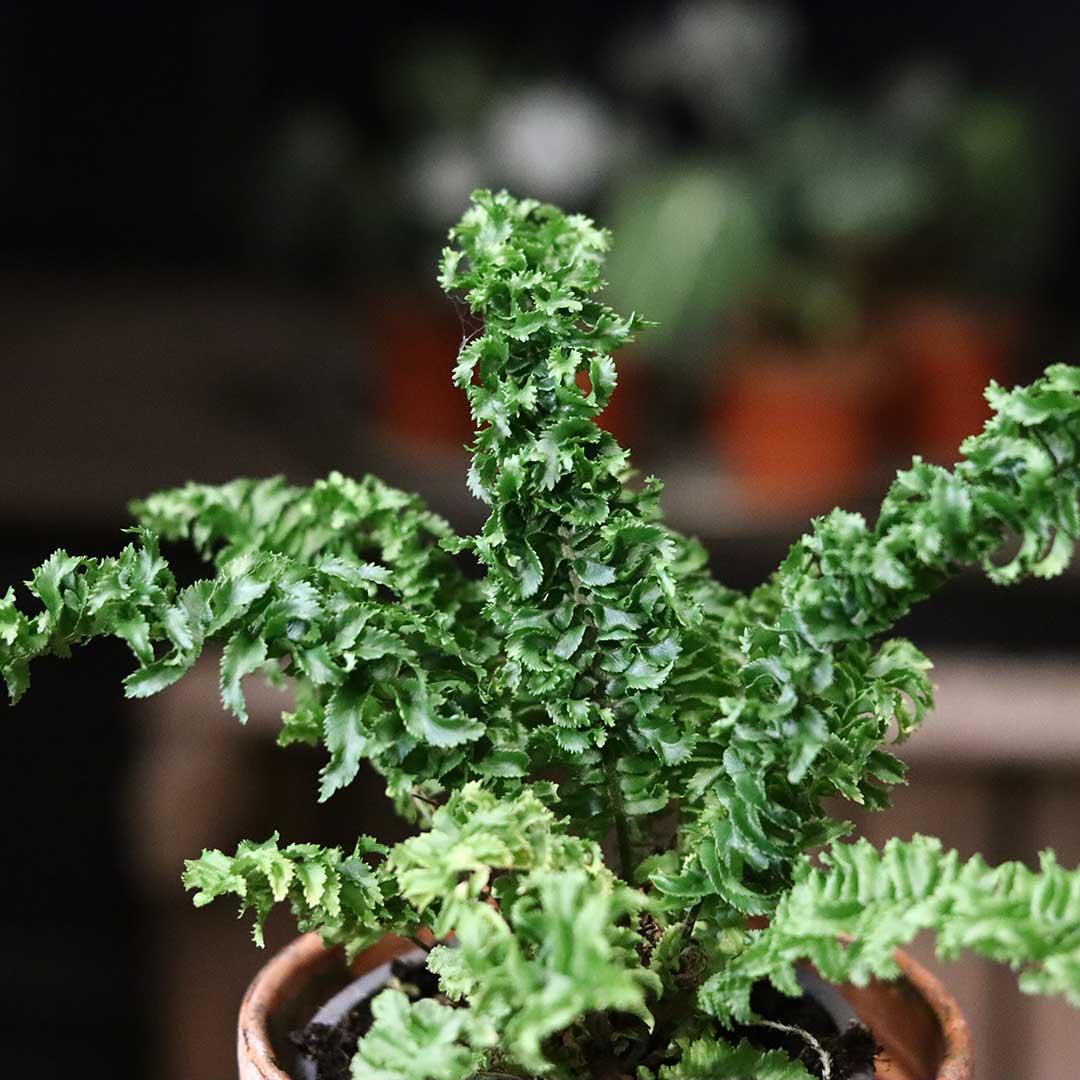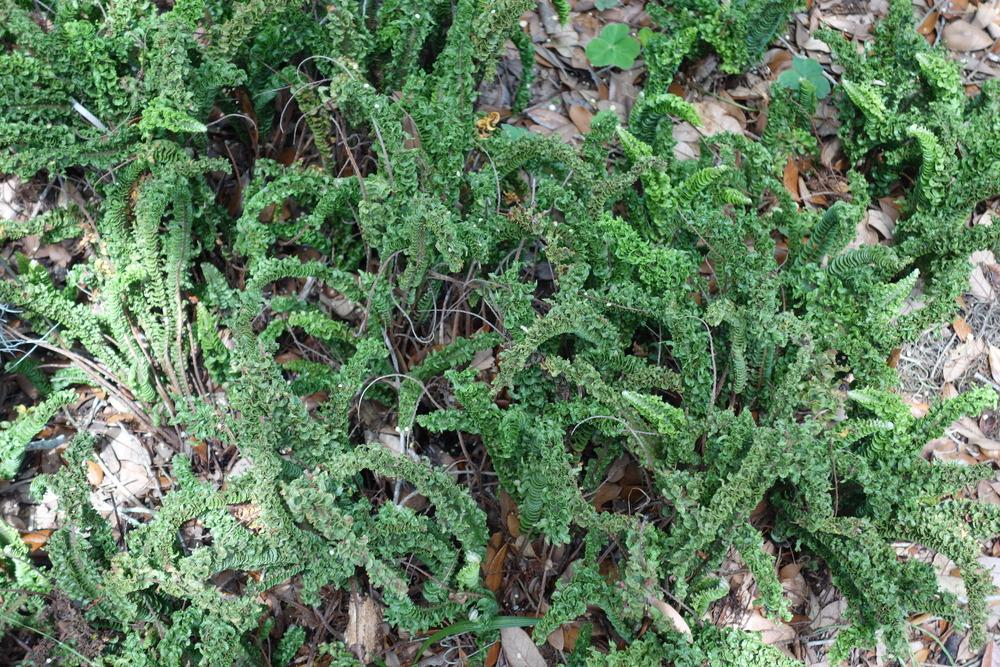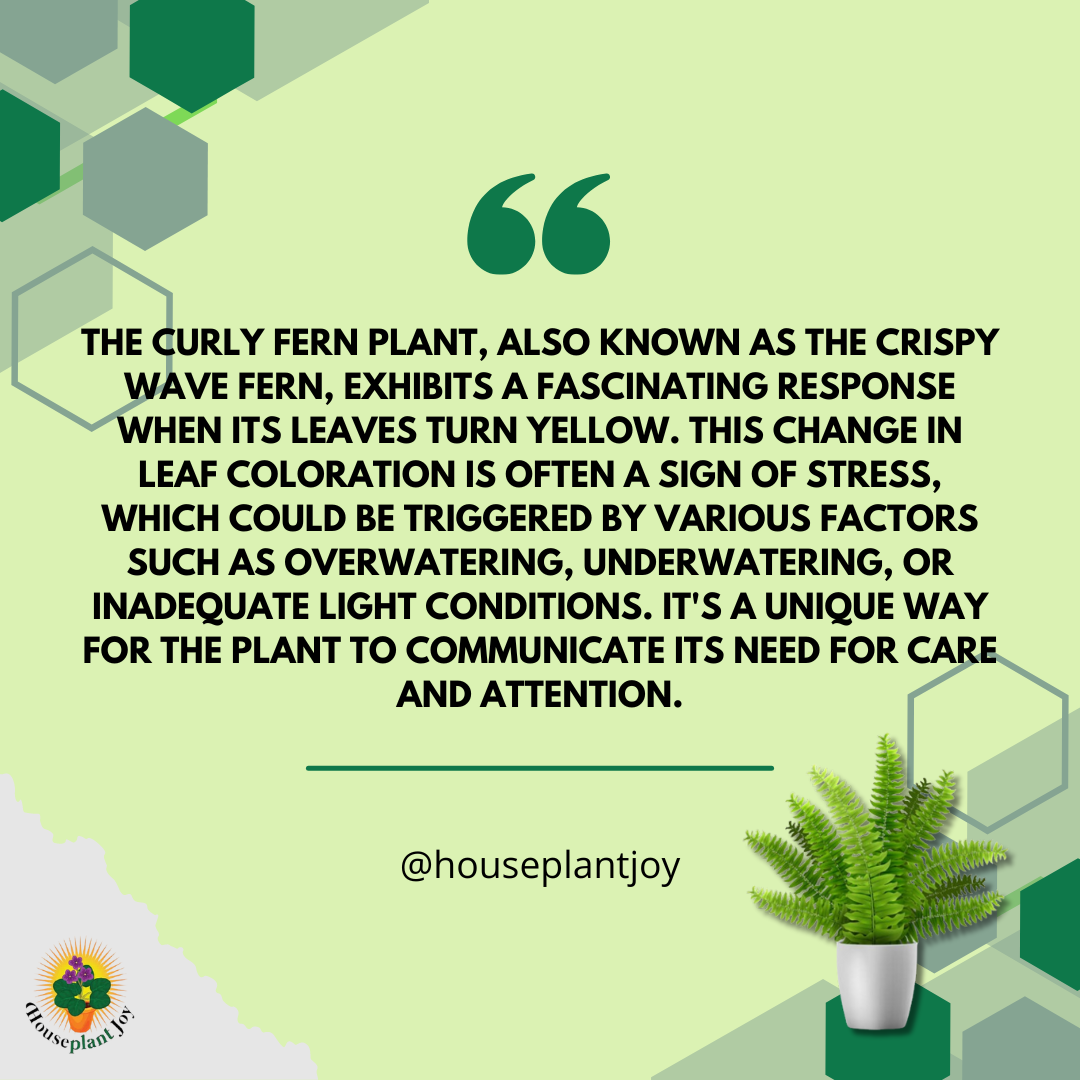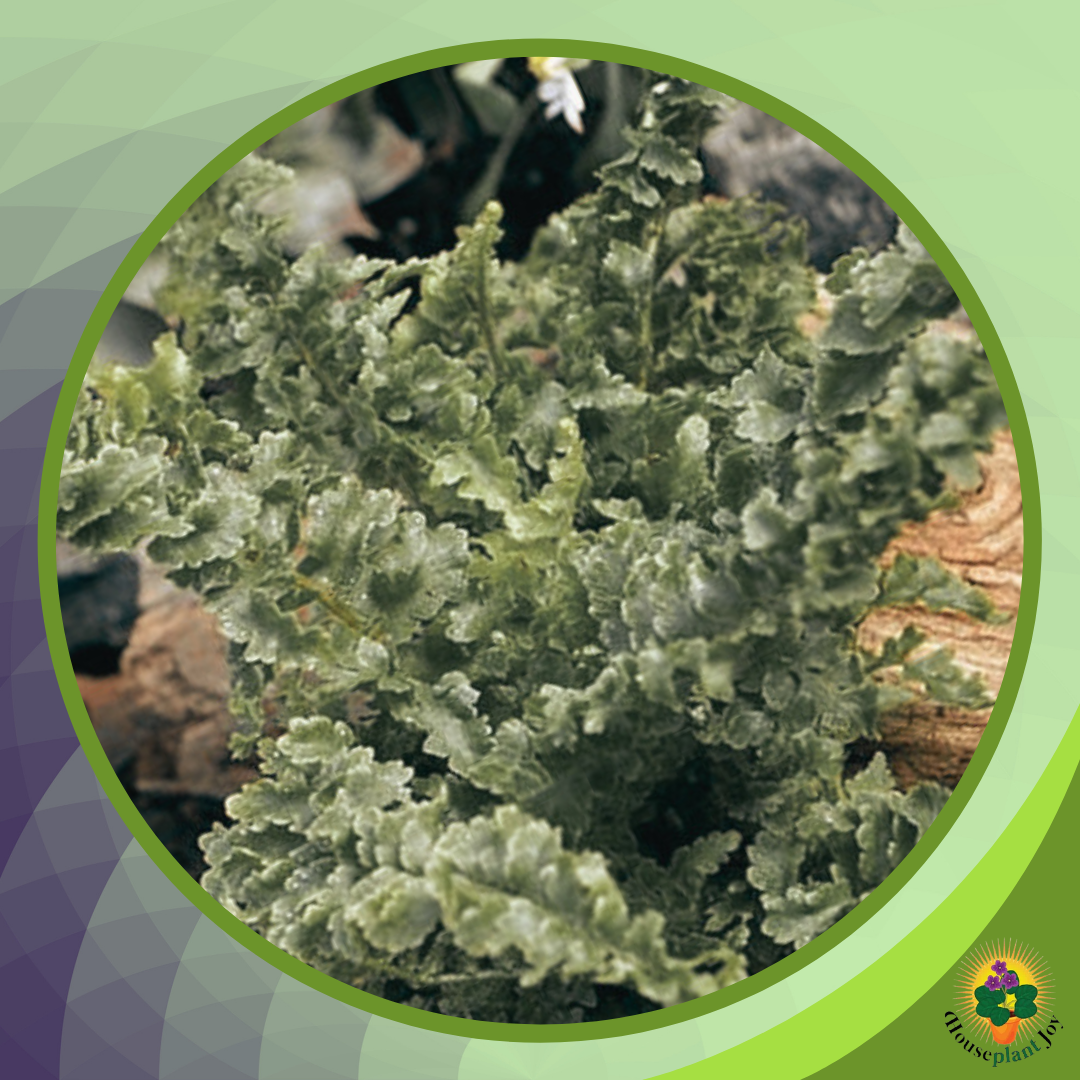HousePlantJoy is supported by our audience. When you purchase through one of our links, we may earn a small affiliate commission. As an Amazon Associate I earn from qualifying purchases. Your cost is not affected.
==================
Keeping my Curly Boston Fern happy has been quite the adventure. Despite trying hard, I’ve faced my share of wilted leaves and browning fronds. It’s tricky, but I’ve figured out some essential care tips.
So, I’ll share the simple yet effective ways I’ve learned to keep my fern looking great. From the right watering to the perfect spot in the house, these tips have helped my fern thrive and can do the same for yours. Let’s learn how to make your Curly Boston Fern the best without all the stress.
Lush and Lovely: Embracing the Curly Boston Fern
Photo by: GardenTags
Curly Boston Ferns, alternatively recognized as Dragon Tail Ferns or Emina Boston Ferns, have bestowed homes and porches with timeless elegance for centuries.
These ferns are known for their twisted and curved fronds, which give them a unique and whimsical appearance. They present beautifully when suspended as hanging plants, showcased individually on a plant stand, or grouped alongside other indoor plants.
One of the distinguishing features of Curly Boston Ferns is their denser foliage and more upright growth habit compared to regular Boston Ferns. This makes them a popular choice for those looking for a fern with a fuller and more compact look. The curly fronds add a touch of elegance to any space.
In addition to its aesthetic appeal, Curly Boston Ferns also offers practical benefits. They are excellent air purifiers, helping to clean the air in your home of harmful chemicals and toxins. This makes them a great choice for those who want to create a healthier indoor environment.
Focus Points Here:
- Curly Boston Ferns, also known as Nephrolepis exaltata ‘Emina,’ are known for their unique twisted fronds and dense foliage, adding elegance to indoor spaces.
- Proper care includes providing bright, indirect light, consistent moisture without overwatering, and using a well-draining soil mix.
- Advanced care techniques such as fertilizing during the growing season and repotting annually with a suitable soil mix promote healthy growth and longevity.
- Vigilance is necessary to address common issues like pests, diseases, and yellowing leaves promptly, ensuring the fern’s overall health.
- Propagation through division or spores and repotting every 1-2 years are essential for maintaining the fern’s vitality and creating new plants.
Unveiling the Curly Boston’s Origins and Traits
Photo by: My Jungle Shack
Curly Boston Ferns, also known as Nephrolepis exaltata ‘Emina,’ are a cultivar of the Boston Fern species. The Boston Fern, with its feathery fronds and lush green foliage, is native to tropical regions worldwide. The ‘Emina Boston Fern’ variety, also known as Dragon Tail Fern, is a more compact and upright form of the Boston Fern.
Curly Boston Fern has finely-toothed, sword-shaped fronds with a unique twist and curve. This gives the fern a distinct appearance and adds a touch of elegance to any space. The fronds exhibit a vibrant green hue, while the plant has the potential to reach heights ranging from 18 to 24 inches and widths spanning 30 to 36 inches.
Curly Boston Ferns thrive in bright, indirect light and prefer partial shade. They are well-suited for indoor environments, as they tolerate lower light conditions. These ferns are known for their ability to adapt to different lighting conditions, making them a versatile choice for various rooms in your home.
Here’s a video about the Curly Boston Fern.
By: Mystic Foliage
Fern-tactic Diversity: Exploring the Many Varieties of Boston Ferns
Photo by: Terracotta
- Regular Boston Fern: This is the classic variety that most people are familiar with. It’s recognized by its long, arching fronds that have a feathery appearance, creating an elegant and somewhat wild look. The fronds grow long and drape gracefully over the edges of pots or hanging baskets, making it an excellent choice for indoor decoration. Its care involves moderate watering, indirect light, and a humid environment replicating its natural tropical habitat.
- Curly Boston Fern (Nephrolepis exaltata ‘Emina’): A cultivar of the Boston Fern, the Emina Curly Boston Fern stands out due to its denser foliage and more pronounced curled or twisted fronds. Unlike the regular variety, its growth habit is more upright, making it appear fuller and more compact. This variety adds a distinctive texture to indoor plant collections or shaded garden areas. It requires similar care to the regular Boston Fern, emphasizing maintaining consistent moisture and avoiding direct sunlight to protect its unique fronds.
- Button Fern (Nephrolepis cordifolia): Though often referred to in the context of Boston Ferns, the Button Fern belongs to a different species. It’s distinguishable by its smaller, rounded fronds, giving it a distinct appearance compared to the elongated fronds of the Boston Fern. This variety is highly adaptable, thriving under various light conditions from low to bright indirect light. Its versatility and ease of care make it suitable for various settings, including terrariums, as a ground cover in shady garden spots or indoor plant arrangements.
Lush & Lovely: Essential Care Tips for Your Curly Boston Fern
Photo by: Stick Healthcare
Ensuring adequate care is vital for maintaining the health and vitality of your Curly Boston Fern.
These ferns thrive in indirect light and prefer partial shade. They require consistent moisture and prefer to stay dry between waterings. The right amount of light and water will help your fern thrive and maintain its lush, curly foliage.
Optimal Lighting Conditions
Curly Boston Ferns flourish in well-lit, indirect environments. Although they can endure occasional exposure to direct sunlight, offering them partial shade is optimal to safeguard their fronds from scorching, which may result in yellowing or browning. Here are some tips for providing optimal lighting conditions for your Curly Boston Fern:
- Place your fern near a north or east-facing window to provide bright, indirect light.
- If you intend to relocate your fern outside, opt for a spot characterized by dappled shade or morning sunlight with afternoon shade.
- Avoid placing your fern in direct sunlight, which can cause the fronds to burn and lose their vibrant green color.
- Monitor your fern’s response to light and adjust its location if you notice any signs of sunburn or wilting.
Watering Your Fern Correctly
Curly Boston Ferns prefer to stay consistently moist. They do not like to sit in water or dry out completely. Finding the right watering rhythm is key to keeping your fern healthy and thriving. Here are some guidelines for watering your Curly Boston Fern:
- Ensure you water your fern once the soil surface becomes slightly dry to the touch. This usually translates to watering every 1-2 weeks, depending on the conditions in your home.
- Use room-temperature water to avoid shocking the fern’s roots.
- Water your fern until the excess water drains out of the bottom of the pot.
- To prevent problems like root rot, it’s important to refrain from overwatering. Ensure the soil allows for adequate drainage to avoid water accumulation around the roots.
Mastering Advanced Care: Techniques for Optimal Results
Photo by: gronvaxtriket
Taking your Curly Boston Fern’s care to the next level can help promote healthy growth and longevity. You can ensure your fern thrives in its environment by implementing advanced care techniques, such as using specific soil mixes and fertilizing appropriately.
The Perfect Soil Mix
To take your Curly Boston Fern’s care to the next level and promote healthy growth and longevity, it’s essential to implement advanced care techniques, starting with the soil mix.
The right soil composition is crucial for these ferns, providing both moisture retention and proper drainage. A well-draining soil that also retains moisture is ideal.
Here’s a Recommended Soil Mix:
- Combine equal parts of coco coir, peat moss, bonsai mix, and perlite.
- Coco coir and peat moss retain moisture while providing aeration for the roots.
- Bonsai mix and perlite ensure good drainage and prevent soil compaction.
This well-balanced soil mix creates an optimal environment for your Curly Boston Fern’s roots to thrive, supporting healthy growth and vitality. Remember to repot your fern annually with this soil mix to maintain its health and vigor over time.
When and How to Fertilize
Fertilizing your Curly Boston Fern is important for providing nutrients to support healthy growth. Here are some tips for when and how to fertilize your fern:
- Fertilize your fern during the growing season, typically spring and summer.
- Use an all-purpose foliage fertilizer that is suitable for indoor houseplants.
- Choose either a water-soluble, liquid, quick-release fertilizer or a granular, slow-release fertilizer.
- Stick to what it says on the fertilizer package about how much and how often to use it.
- Sprinkle some fertilizer around the base of the fern, making sure to avoid getting it directly on the fronds.
- Water the fern after fertilizing to ensure the roots absorb the nutrients.
Fertilizing your Curly Boston Fern will help promote healthy foliage and encourage robust growth. However, be careful not to overdo it with the fertilizer, as that could result in too many nutrients building up and potentially harm your plant.
Navigating Challenges: A Guide to Troubleshooting Common Issues
Photo by: The National Gardening Association
Like any plant, Curly Boston Ferns sometimes encounter common issues such as pests, diseases, or yellowing leaves. Addressing these issues promptly can help keep your fern healthy and thriving.
Dealing with Pests and Diseases
Curly Boston Ferns are generally resilient against pests and diseases. However, they can occasionally encounter issues such as mealybugs, aphids, or fungal infections. Below are some suggestions for managing pests and diseases:
- Regularly inspect your fern for signs of pests, such as webs, sticky residue, or discoloration.
- If you spot any pests, gently remove them by wiping the areas with a damp cloth or using organic insecticidal soap.
- Ensure good air circulation around your fern to prevent the development of fungal infections.
- If you suspect a fungal infection, remove the affected fronds and treat the fern with a fungicide formulated for houseplants.
- Keep your fern in good shape by dusting the fronds regularly and removing any dead or decaying leaves.
You can help keep your Curly Boston Fern healthy and pest-free by staying vigilant and promptly addressing pest and disease issues.
Addressing Yellowing Leaves
Yellowing leaves may suggest overwatering, underwatering, or deficiencies in nutrients. Here are some tips for addressing yellowing leaves in your Curly Boston Fern:
- Check the moisture level of the soil. If it feels overly wet, you may be overwatering your fern.
- If the soil feels dry, your fern may be underwatered. Make sure you’re giving enough water to keep the soil consistently damp.
- Nutrient deficiencies can also cause yellowing leaves. Consider fertilizing your fern with a balanced houseplant fertilizer to provide the necessary nutrients.
- If the yellowing leaves persist or worsen, it may indicate a more serious issue. Consult a plant expert or your local plant nursery for further guidance.
Addressing yellowing leaves promptly will help identify and resolve any underlying issues, ensuring the overall health and vitality of your Curly Boston Fern.
Growth and Transition: Mastering Propagation and Repotting Techniques
Photo by: Zielony Parapet
Propagating and repotting your Curly Boston Fern can help promote healthy growth and create new plants. Understanding the proper techniques for propagation and repotting will ensure successful outcomes.
How to Propagate Your Fern
Propagating your Curly Boston Fern can be done through division or spores. Here is a step-by-step guide for propagating your fern through division:
- Choose a healthy and mature fern with multiple crowns.
- Take the fern out of its pot carefully and gently separate the crowns, ensuring each division has its roots.
- Plant each division in its pot using a soil mix that suits it well.
- Make sure to give the divisions a nice watering and place them in a spot where they can enjoy plenty of bright, indirect sunlight.
- Keep the soil consistently moist to promote root development.
Propagation through spores is more complex and time-consuming. It involves collecting and germinating spores from mature fronds. This method requires patience and specific conditions to be successful. If you are new to propagation, division is a more straightforward and reliable method for multiplying your Curly Boston Fern.
Best Practices for Repotting
When your Curly Boston Fern starts to outgrow its pot or the soil gets too compacted, it’s time for a repotting session. Here are some best practices for repotting your fern:
- Opt for a pot just a tad larger than the one you’re currently using, and make sure it has those handy drainage holes at the bottom.
- Prepare a suitable soil mix using the recommended combination of coco coir, peat moss, bonsai mix, and perlite.
- Gently remove the fern from its current pot, not damaging the roots.
- Place a layer of soil in the new pot, ensuring that the fern will sit at the same level as before.
- Position the fern in the new pot, gently firm it around the roots and fill the remaining space with soil.
- Water the fern thoroughly after repotting to settle the soil and hydrate the roots.
Repotting your Curly Boston Fern every 1-2 years will help ensure it has enough space to grow and access fresh, nutrient-rich soil.
Here’s a video about different ferns to grow in your house.
By: Summer Rayne Oakes
Lush Elegance: Nurturing Your Curly Boston Fern
Caring for our Curly Boston Fern was an enriching journey filled with learning and growth. Though we encountered challenges such as wilted leaves and browning fronds along the way, we discovered essential care tips that helped our fern thrive.
By providing the right lighting, watering, soil mix, and occasional fertilization, we managed to maintain the health and vibrancy of our Curly Boston Fern. Addressing any pests or diseases promptly was crucial for its well-being.
Understanding the specific needs of this fern, including propagation and repotting techniques, empowered us to nurture a lush and beautiful plant. Staying informed about common issues like yellowing leaves and following best practices for care was instrumental in its success.
We invited others to embark on their own journey with the Curly Boston Fern, using the tips and tricks shared in our guide. With proper attention and nurturing, they too could enjoy the beauty and serenity of a flourishing Curly Boston Fern in their indoor space.
For more information and resources on plant care, visit the Houseplant Joy website. Let’s continue to cultivate a world filled with lush and lovely plants, one fern at a time.
Frequently Asked Questions
Can Curly Boston Ferns Survive Winter Indoors?
Curly Boston Ferns can definitely survive indoors during the winter months. They’re happiest when the thermostat hovers between 60 and 75 degrees Fahrenheit, and there’s a bit of humidity in the air. Just find them a cozy spot with indirect sunlight and regularly water them. That should keep them thriving throughout the winter season!
Are Curly Boston Ferns Toxic to Pets?
Curly Boston Ferns are not toxic to pets. They are safe around dogs, cats, and other household pets. It’s wise to monitor your pets and deter them from nibbling on any houseplants.
How Often Should I Mist My Fern?
Misting your Curly Boston Fern can help increase humidity around the plant, which it enjoys. Aim to mist the fronds every other day or as needed to maintain a humid environment. Combine misting with regular watering to provide adequate moisture.


